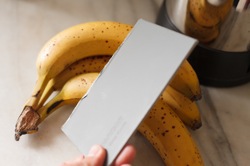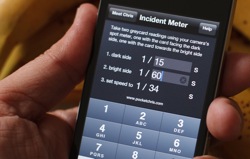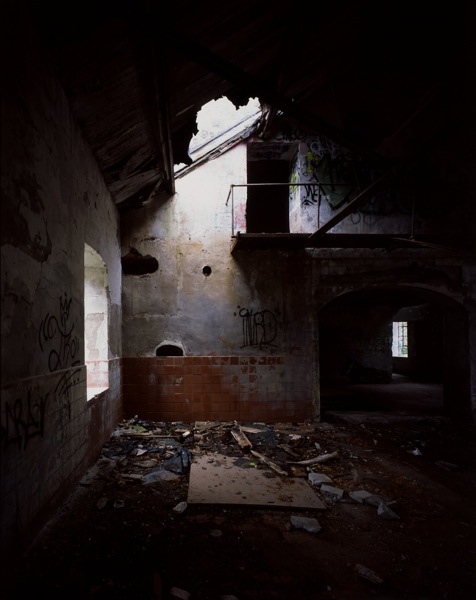Incident light meters are expensive. They can easily go for $300 or more. The recently announced Sekonic L-748DR with touch screen will be almost $470.
Your camera’s automatic metering in the Program, Aperture Priority or Shutter Priority modes does a remarkably good job. Unfortunately there are still quite a few light situations the camera’s reflective metering will fail and give you exposures that are either too bright or too dark.
Think white rabbit in snow or band on stage with a black backdrop. But even in every-day situations the reflectivity of a scene can be off if there are too many bright or dark objects.
What if you could achieve excellent measurements and great exposures in the studio or in difficult light situations without having to melt your credit card?
Meet PocketChris Incident Light Meter!
Introducing a new member in the PocketChris family of iPhone apps: the new PocketChris Incident Light Meter!
![]() PocketChris Incident Light Meter is ready for iOS 6 and iPhone 5 and will allow you to use a simple 18% grey card to achieve results that rival an expensive dedicated incident light meter.
PocketChris Incident Light Meter is ready for iOS 6 and iPhone 5 and will allow you to use a simple 18% grey card to achieve results that rival an expensive dedicated incident light meter.
Instead of having to buy a dedicated incident light meter, the grey card will set you back about $10.
Incident Metering will almost always yield better results than the automatic measurements that your camera does.
Here’s how it works
Set the camera to a suitable ISO and aperture. Take two shutter speed readings using the spot meter in your DSLR, one with the grey card facing towards the bright side and one with the grey card facing towards the dark side:
Measurement 1, camera suggests 1/60 sec

Measurement 2, camera suggests 1/15 sec

PocketChris Incident Light Meter suggests 1/34 sec:

Picture taken with 1/30 sec, the closest shutter speed to the suggested value:

As an added bonus, while you have the grey card out, do a quick custom white balance and get perfect colours too!
PocketChris Incident Light Meter has just been submitted to the App Store for review, it should be available within the next week or two.
Grey cards are readily available at most retailers. B&H Photo has them, Midwest Photo Exchange has a set at a particularly good value and if you’re in Europe, check out the cards at enjoyyourcamera.com


 The recap continues. After the Washington D.C. workshop, I continued to San Francisco, or rather north of it to Petaluma in beautiful Sonoma County.
The recap continues. After the Washington D.C. workshop, I continued to San Francisco, or rather north of it to Petaluma in beautiful Sonoma County.




